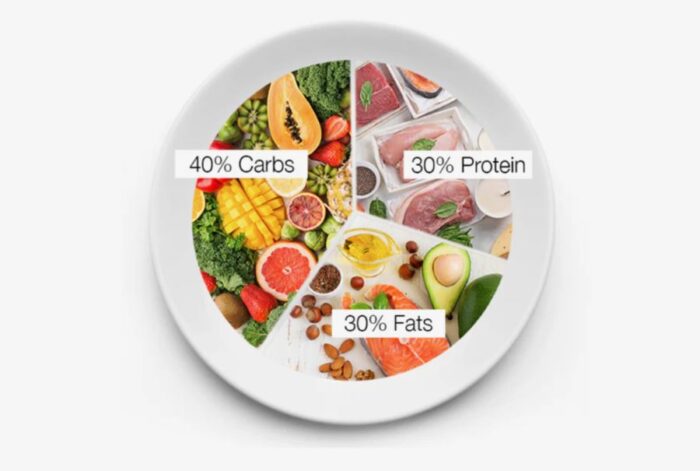The Zone Diet is a popular eating plan that emphasizes a balanced intake of macronutrients—protein, carbohydrates, and fat—to help regulate insulin levels and promote overall health. Created by Dr. Barry Sears, this diet is designed to help you achieve and maintain a healthy hormonal balance, reducing inflammation, enhancing energy levels, and supporting weight loss. At the heart of this approach is a structured system that breaks down your daily meals into specific ratios, with a focus on healthy, nutrient-rich foods. In this article, we’ll explore the best Zone Diet foods and how they work to support your health and weight loss goals.
What is the Zone Diet?
The Zone Diet is based on the concept of maintaining a specific balance of macronutrients in each meal. The diet encourages you to consume 40% carbohydrates, 30% protein, and 30% fat, a ratio that helps stabilize blood sugar levels and prevents insulin spikes. The theory behind the Zone Diet is that by keeping your blood sugar levels stable, you can reduce inflammation, which is a contributing factor to weight gain, chronic disease, and fatigue.

Zone Diet meals are typically broken into “blocks.” Each block consists of one serving of carbohydrates, one serving of protein, and one serving of fat. Depending on your caloric needs, you will eat a specific number of blocks per day. The diet encourages eating whole, natural foods and avoiding processed or refined foods.
The Best Foods For Your Diet
The key to success on the Zone Diet is choosing the right foods within each macronutrient group—proteins, carbohydrates, and fats—that will nourish your body and help you stay in the “zone.” Here’s a detailed look at the best Zone Diet foods to include in your meals.
1. Protein Sources for the Zone Diet
Protein is a crucial part of the Zone Diet as it helps build and repair tissues, supports muscle function, and keeps you feeling full and satisfied. When choosing protein sources for the Zone Diet, prioritize lean, high-quality proteins that are low in unhealthy fats.
- Chicken Breast: Skinless chicken breast is a lean and versatile source of protein that fits perfectly within the Zone Diet.
- Turkey: Like chicken, turkey is a great option for lean protein. Opt for ground turkey or sliced turkey breast for sandwiches and salads.
- Fish: Fatty fish like salmon, mackerel, and sardines are encouraged on the Zone Diet because they are rich in omega-3 fatty acids, which are anti-inflammatory.
- Eggs: Eggs are a complete source of protein and can be eaten boiled, scrambled, or poached as part of any Zone Diet meal.
- Tofu and Tempeh: For plant-based eaters, tofu and tempeh are excellent protein-rich options that are low in carbohydrates and fat.
- Greek Yogurt: Non-fat or low-fat Greek yogurt is a high-protein option that can be used in breakfast, snacks, or even as a cooking ingredient.
2. Carbohydrate Sources for the Zone Diet
Carbohydrates provide energy for your body, but not all carbs are created equal. The Zone Diet encourages the consumption of low-glycemic carbohydrates, which means they have a slower impact on blood sugar levels. This helps prevent insulin spikes and keeps you in the zone.

- Non-Starchy Vegetables: Vegetables like spinach, kale, broccoli, cauliflower, peppers, and zucchini are low-glycemic and nutrient-dense. These should make up the bulk of your carbohydrates on the Zone Diet.
- Fruits: While fruits contain natural sugars, many are low-glycemic and can be included in the Zone Diet. Apples, berries, cherries, grapefruit, and pears are great choices.
- Legumes: Beans, lentils, and chickpeas are good sources of complex carbohydrates and fiber. They can be included in moderation on the Zone Diet.
- Whole Grains: Some whole grains like quinoa, barley, and steel-cut oats can be included in small portions. However, the Zone Diet generally limits grains to avoid blood sugar spikes.
- Sweet Potatoes: These are a great source of complex carbohydrates and are high in fiber, making them a good option for maintaining stable blood sugar levels.
3. Healthy Fats for the Zone Diet
Fats play an important role in the Zone Diet by helping you feel full and supporting brain health. However, the diet emphasizes healthy fats, particularly omega-3 fatty acids and monounsaturated fats, while avoiding saturated and trans fats.
- Olive Oil: Extra virgin olive oil is one of the best sources of healthy fats. It can be used in dressings, for cooking, or drizzling over vegetables.
- Avocados: Rich in monounsaturated fats, avocados are a healthy and satisfying fat source. Use them in salads, sandwiches, or as a topping for meals.
- Nuts and Seeds: Almonds, walnuts, chia seeds, and flaxseeds are excellent sources of healthy fats, as well as protein and fiber. However, they should be eaten in moderation due to their calorie density.
- Fatty Fish: Fish like salmon and mackerel provide a double benefit—they are high in protein and omega-3 fatty acids, making them perfect for the Zone Diet.
- Coconut Oil: While higher in saturated fat than olive oil, coconut oil can still be used in moderation as a cooking fat.
Foods to Avoid on the Diet
While the Zone Diet promotes a balanced approach to macronutrients, there are certain foods that should be avoided to stay within the correct ratios and prevent insulin spikes. These foods tend to be highly processed, sugary, or refined.
- Sugary Snacks: Candies, cookies, cakes, and other sugary treats are off-limits on the Zone Diet because they cause rapid spikes in blood sugar and lead to insulin resistance.
- Refined Grains: White bread, pasta, and rice are high-glycemic carbohydrates that are rapidly digested, causing a quick rise in blood sugar. Stick to whole grains in moderation.
- Sugary Beverages: Sodas, fruit juices, and sweetened coffee or tea should be avoided on the Zone Diet. Opt for water, herbal teas, or black coffee.
- Processed Foods: Many processed foods contain unhealthy fats, excessive sodium, and hidden sugars, making them unsuitable for the Zone Diet.
- Trans Fats: Found in many fried foods and commercially baked goods, trans fats are harmful and should be avoided on any healthy eating plan.
How to Build a Balanced Diet
Each Zone Diet meal should include a balanced ratio of 40% carbohydrates, 30% protein, and 30% fat. Here’s how you can create a balanced meal based on these ratios:

- Choose Your Protein: Start with a lean protein source like chicken, fish, tofu, or eggs. Aim for 3-4 ounces of protein per meal, or roughly one-third of your plate.
- Add Low-Glycemic Carbohydrates: Fill half your plate with vegetables like leafy greens, broccoli, or peppers. You can also add a small portion of fruit or legumes to your meal for a bit of sweetness or texture.
- Include Healthy Fats: Finish your meal by adding healthy fats like a drizzle of olive oil, a few slices of avocado, or a handful of nuts.
Simple Zone Meal Plan
Here’s a simple meal plan to give you an idea of how to structure your meals throughout the day:
Breakfast
- Scrambled eggs with spinach and tomatoes (protein and low-glycemic carbs)
- A small portion of avocado (healthy fat)
- A side of mixed berries (low-glycemic carbs)
Lunch
- Grilled salmon (protein) with a large salad of leafy greens, cucumber, and bell peppers (low-glycemic carbs)
- Olive oil and lemon dressing (healthy fat)
Dinner
- Grilled chicken breast (protein)
- Roasted broccoli and cauliflower (low-glycemic carbs)
- Quinoa (carbohydrates)
- A drizzle of olive oil (healthy fat)
Snack
- Greek yogurt (protein) with a handful of almonds (healthy fats) and a few sliced strawberries (carbs)
Final Thoughts on Zone Diet Foods
Following the Zone Diet involves careful attention to the balance of macronutrients, with an emphasis on whole, nutrient-dense foods. By choosing the right Zone Diet foods—including lean proteins, low-glycemic carbohydrates, and healthy fats—you can achieve weight loss, reduce inflammation, and maintain steady energy levels. Whether you’re new to the Zone Diet or looking to fine-tune your eating habits, focus on real, whole foods to get the most out of this dietary approach.
Staying in the zone requires mindfulness, but once you get the hang of it, the Zone Diet can be a highly effective way to optimize your health and well-being.
